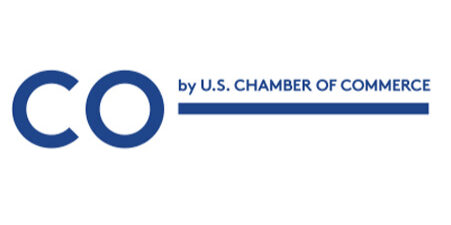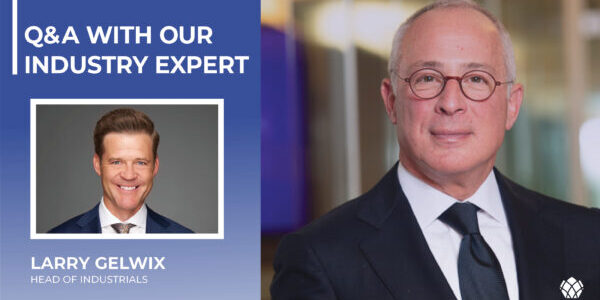Forget the Gloom: This Market Needs Fed Clarity
Forget the Gloom: This Market Needs Fed Clarity
Is the U.S. commercial real estate market really living on the edge of the precipice? A casual observer might be forgiven for thinking so, given the onslaught of dire prognostications from financial journalists and social media doom scrollers.
Some media outlets have issued warnings in the past weeks of a coming real estate capital squeeze following the failures of Silicon Valley Bank and Signature Bank, as well as the $30 billion rescue mission to prop up First Republic Bank.
The working assumption is that weakened regional bank balance sheets and enhanced regulatory oversight will starve commercial property developers of capital for the new construction of office buildings, retail outlets, apartments, and other commercial real estate ventures.
Recall the predictions of abandoned urban office towers in the wake of remote work set off by the pandemic. Almost nothing is “forever” in the real estate business. Occupancy rates in 10 major U.S. cities continue to improve and recently surpassed the 50% mark for the first time since the start of the Covid-19 outbreak, according to an index compiled by the security firm Kastle Systems.
The emotional roller coaster ride of horror films dominates our pop culture, but here it feels like the pessimists are attempting to manufacture a plot line. To understand where the U.S. commercial real estate market might be heading next, you first need an accurate read on the primary cause behind the current freeze in the capital markets.
In my view, the critical issue is not the availability of capital — it is the widespread market uncertainty about the price of money. The challenges facing commercial real estate, and I will concede they are far from trivial, predate the recent micro instability in the banking sector. The economic shock of the pandemic was a precipitating cause, but the primary reason for the muted activity in commercial real estate transactions is the uncertainty about the Federal Reserve’s credit tightening cycle.
Since March of 2022 the Fed has been raising its benchmark overnight interest rate by leaps and bounds from near-zero levels to counter the inflationary pressure that is built up within the economy in recent years. It was never going to be free money forever and inflation had to be addressed.
In its latest move, the Fed increased its Federal Funds rate to a range of 4.75% to 5%, the highest since September 2007. Consumer prices have trended downward to a 6% annual pace as of February from the double-digit inflationary pace of early last year.
Yet analysts are far from unified as to when Fed policymakers led by Chairman Jerome Powell will say enough is enough. From my personal perspective, I hope we are done with rate increases for the foreseeable future.
The opacity over when interest rates and financial conditions will stabilize explains in part why Vornado Realty Trust recently hit the pause button on its flagship Pennsylvania Station project, featuring 10 new skyscrapers. In an environment of uncertainty, Steve Roth, Vornado’s CEO and a master of the real estate universe, explained it in the simplest way: The prospect of new construction is “almost impossible “ because of tight lending conditions.
In my conversations with clients, regardless of whether they are interested in launching commercial real estate transactions, financing or exiting them, that lack of clarity about the stability of interest rates is the most pressing concern.
You cannot realistically structure a transaction without being able to assume a debt interest rate of x%, when it may be x% plus. When we have a reliable, stable number, clients say, then we can see if a deal has a path to profitability that is attractive to buyers and sellers. Until those financial guard rails are in place, market participants will understandably remain ultra-cautious. Lenders will just wait for a reasonable market assurance that they will be paid off at the conclusion of a loan term.
The good news is that the Fed, at least judging by its own internal forecast, may be nearing the end of its credit tightening cycle. True, we do not yet know if the rapid credit contraction during the past year will result in a soft economic landing, or a sharp recession. Yet as interest rates start to normalize, the deal volume in the commercial real estate sector, as well as in M&A, should begin to accelerate from this static moment.
When we get to that point, a cathartic workout in the sector can begin — either via transactions or restructurings. So, there will be instances of some economic pain involved. Some existing and planned real estate deals will no longer make economic sense.
The runup in commercial real estate values during the era of ultra-cheap money over the last 15 years will reset to match the expected acceptable returns of capital invested. It is possible land prices, the easiest variable to flex in development for example, will fall.
Market expectations will adjust as both buyers and sellers want and need to transact. In the meantime, buyers and sellers may want to consider within what financial parameters they would be willing to commit capital. What are the market and monetary scenarios necessary to take action? When financial conditions normalize, the ability to act quickly will be advantageous.
What is clear to me is that the unrelenting alarmism about the long-term prospects for commercial real estate is almost certainly overblown. Let us be reasonable and factual — a run on Silicon Valley Bank has little relation to current market dynamics within the commercial real estate market.
Yes, hybrid work models are most likely here to stay, and younger workers are less interested in long commutes to office towers in major urban centers. Still, investment opportunities await developers that can create inviting collaborative office spaces in existing and newer developments. That is true not only in densely populated urban centers, but also along the fast-growing exurbs of large metro areas. And without a doubt, there is a housing shortage in all categories.
The Amazonifaction of American retailing continues to roll over regional malls, but traditional retailers now are adapting to new multichannel realities. Bricks-and-mortar retailers are embracing this retailing multiverse and direct- to-consumer brands are experimenting with pop-up shops and new permanent flagship stores. The reinvention of retail around home delivery has also sparked demand for logistical facilities to support the last-mile infrastructure to consumers.
There is no denying the commercial real estate market is in transition. Yet once the Fed moves on from its inflation battle, the apocalyptic predictions of a massive market contraction may not age well going forward.
Commercial real estate is a vast, $20 trillion market. And once lending and deal-making activity return back to historical levels, this industry will continue to play a crucial role in the ongoing reinvention of our work, shopping and home lives and the economic vibrancy of our cities.





